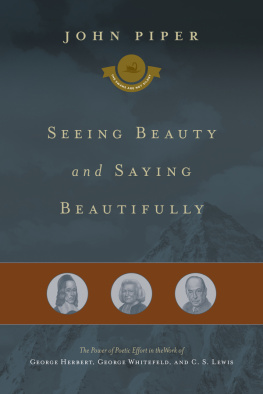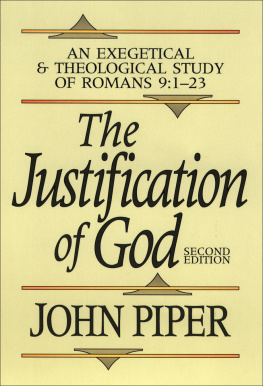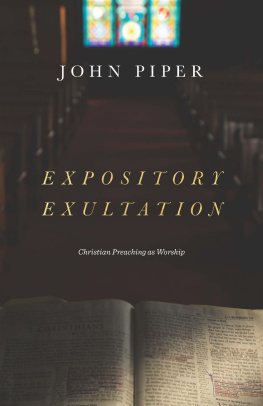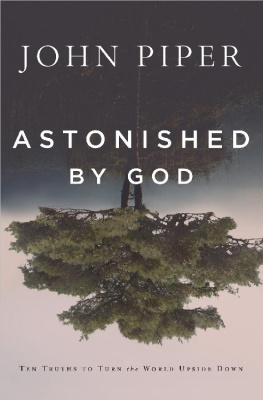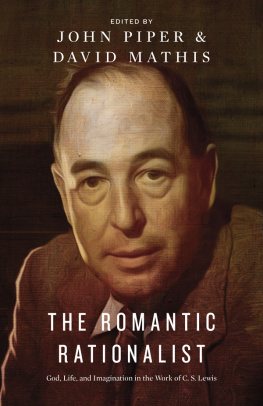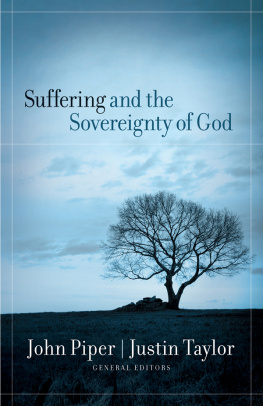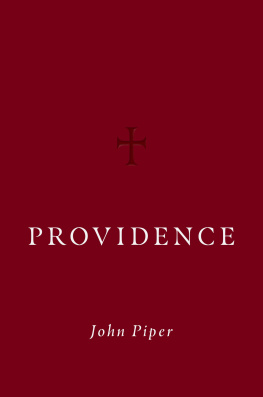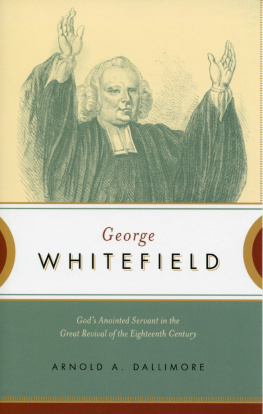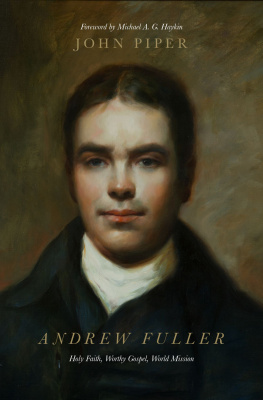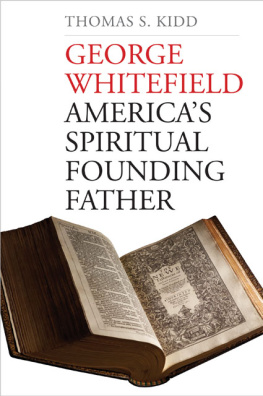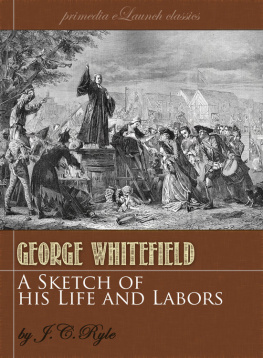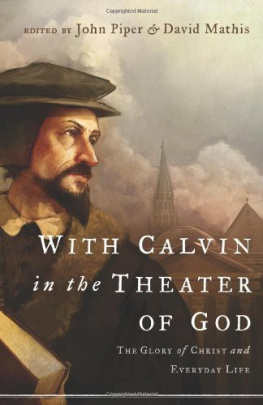Thank you for downloading this Crossway book.
Sign-up for the Crossway Newsletter for updates on special offers, new resources, and exciting global ministry initiatives:
Crossway Newsletter
Or, if you prefer, we would love to connect with you online:
Facebook
Twitter
Google +
BOOKS BY JOHN PIPER
Bloodlines: Race, Cross, and the Christian
Brothers, We Are Not Professionals
Contending for Our All (Swans 4)
The Dangerous Duty of Delight
Desiring God
Does God Desire All to Be Saved?
Dont Waste Your Life
Fifty Reasons Why Jesus Came to Die
Filling Up the Afflictions of Christ (Swans 5)
Finally Alive
Five Points
Future Grace
God Is the Gospel
Gods Passion for His Glory
A Godward Heart
A Godward Life
The Hidden Smile of God (Swans 2)
A Hunger for God
The Legacy of Sovereign Joy (Swans 1)
Let the Nations Be Glad!
Life as a Vapor
Pierced by the Word
The Pleasures of God
The Roots of Endurance (Swans 3)
Seeing and Savoring Jesus Christ
Sex and the Supremacy of Christ
Spectacular Sins
Suffering and the Sovereignty of God
Taste and See
Think
This Momentary Marriage
What Jesus Demands from the World
When I Dont Desire God
THE SWANS ARE NOT SILENT
Book Six
SEEING BEAUTY
and SAYING
BEAUTIFULLY
The Power of Poetic Effort in the Work of
GEORGE HERBERT, GEORGE WHITEFIELD, AND C. S. LEWIS
JOHN PIPER

Seeing Beauty and Saying Beautifully
Copyright 2014 by Desiring God Foundation
Published by Crossway
1300 Crescent Street
Wheaton, Illinois 60187
All rights reserved. No part of this publication may be reproduced, stored in a retrieval system, or transmitted in any form by any means, electronic, mechanical, photocopy, recording, or otherwise, without the prior permission of the publisher, except as provided for by USA copyright law.
Cover design: Dual Identity, inc.
Cover portrait illustrations: Howell Golson
Cover image: Shutterstock
First printing 2014
Printed in the United States of America
Unless otherwise indicated, Scripture quotations are from the ESV Bible (The Holy Bible, English Standard Version), copyright 2001 by Crossway. 2011 Text Edition. Used by permission. All rights reserved.
Scripture quoatations marked KJV are from the King James Version of the Bible.
All emphases in Scripture quotations have been added by the author.
Trade paperback ISBN: 978-1-4335-4294-7
ePub ISBN: 978-1-4335-4297-8
PDF ISBN: 978-1-4335-4295-4
Mobipocket ISBN: 978-1-4335-4296-1
Library of Congress Cataloging-in-Publication Data
Piper, John, 1946
Seeing beauty and saying beautifully : the power of poetic effort in the work of George Herbert, George Whitefield, and C.S. Lewis / John Piper.
1 online resource. (The swans are not silent; Book 6)
Includes bibliographical references and index.
Description based on print version record and CIP data provided by publisher; resource not viewed.
ISBN 978-1-4335-4295-4 (pdf) ISBN 978-1-4335-4296-1 (mobi) ISBN 978-1-4335-4297-8 (epub) ISBN 978-1-4335-4294-7 (print)
1. Christianity and the arts. 2. Creation (Literary, artistic, etc.)Religious aspectsChristianity. 3. AestheticsReligious aspectsChristianity. 4. Herbert, George, 15931633. 5. Whitefield, George, 17141770. 6. Lewis, C. S. (Clive Staples), 18981963. I. Title.
BR115.A8
261.5'8dc23 2014008639
Crossway is a publishing ministry of Good News Publishers.
In memory of
Clyde S. Kilby
whose classroom poetic effort
made us savor what he saw
CONTENTS
When Eraclius, the successor to Augustine as bishop of Hippo in AD 400, said of his awe-inspiring predecessor, The swan is silent, he compared his own voice to Augustines as a chirping cricket. He was not referring mainly to the beauty of Augustines eloquence but to the beauty and power and fullness of his ideas.
But when I say of George Herbert and George Whitefield and C. S. Lewis that these swans are not silent, I have in mind precisely the way their eloquence and their ideas relate to each other. The aim of this volume of The Swans Are Not Silent is to probe the interrelationship between seeing beauty and saying it beautifully.
GEORGE HERBERT, PASTOR-POET
George Herbert died in 1633 just short of his fortieth birthday. Late in that short life, he became an Anglican country pastor. He wrote a book called The Country Parson. But, he is known today because of his peerless combination of poetic craftsmanship and profound Christian faith. If any swan should be considered when pondering the relationship between seeing the beauty of Christ and saying it with unparalleled technical, artistic skill, it is George Herbert. He is arguably the most skillful and important British devotional lyricist of [the seventeenth century] or any other time.
GEORGE WHITEFIELD, PREACHER-DRAMATIST
George Whitefield was an English Christian evangelist who lived from 1714 to 1770. He crossed the Atlantic thirteen times and is buried, not in his homeland, but in Newburyport, Massachusetts. Along with John Wesley in England, Howell Harris in Wales, and Jonathan Edwards in Americabut more international than any of themWhitefield was a primary catalyst of the First Great Awakening.
The preaching pace he set for thirty years was almost superhuman. Sober estimates are that he spoke about one thousand times every year for thirty years. That included at least eighteen thousand sermons and twelve thousand talks and exhortations. But it is not the pace that concerns us in this book, but the powerspecifically the connections between the power of his biblical perception, the power of his natural eloquence, and the power of his spiritual effectiveness.
Jonathan Edwardss wife Sarah said that Whitefield was a born orator.
George Whitefield was not a poet in the strict sense the way George Herbert was. But his preaching craft, with all its verbal and emotional and physical dimensions, was such a work of art that Benjamin Franklin said that listening was a pleasure of much the same kind with that received from an excellent piece of music. Therefore, Whitefield provides us with a second historical seedbed for our question about the relationship between seeing beauty and saying beautifully.
C. S. LEWIS, SCHOLAR-NOVELIST
C. S. Lewis is the third focus of our study. Peter Kreeft stands in awe of Lewis and says, Clive Staples Lewis was not a man: he was a world.
Lewis wanted to be a great poet. But he admits at age fifty-six that his poetry met with little success. Nevertheless, he says,
The imaginative man in me is... continuously operative.... It was he... who led me to embody my religious belief in symbolical... forms, ranging from Screwtape to a kind of theologized sciencefiction. And it was of course he who has brought me, in the last few years, to write the series of Narnian stories for children.
This imaginative man who wanted to be a great poet remained a real poet in all his prose. Alister McGrath expressed it well when he said that much of Lewiss power was
Next page
